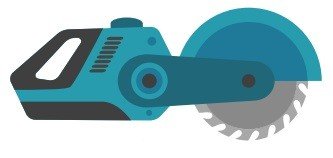Shop Power Tools: What's The Only Thing Nobody Is Talking About
페이지 정보

본문
 The Workhorse of the Shop Power Tools
The Workhorse of the Shop Power ToolsHand-held power tools shop online are powered by electricity, internal combustion, or compressed air. They may be used for cutting, drilling, sanding or grinding materials.
A table saw is one of the most important power tools that every woodworker has to have. It is able to handle nearly any cutting task. You can consider a miter-saw table and the drill/driver combo.
Table Saw
A table saw is the mainstay of shop power tools and perhaps the most versatile woodworking tool. It can be used to rip cross-cut, miter cut and even dado and rabbet stock. It is also able to cut angles for chests, frames and planters.
The saw is equipped with a large circular blade that spins at high speeds. The saw has large tables which support the stock as it is passing through the blade. The saw blade is protected by a blade guard that helps to keep the wood from getting caught and then possibly being kicked back towards the operator. The saw is also protected by the splitter or riving blade that is a vertical projection located directly behind the blade that can take the form of a pin or fin.
Table saws designed for contractors feature a larger motor that hinges from the rear of the saw and drives the blade using one or two rubber v-belts. These saws are generally used by tradesmen and carpenters but they can be found in home shops as well. They come with more features than portable saws, for instance a sliding miter table.
Smaller table saws come with smaller motors that are lighter in weight that is usually belt driven. They are less feature-packed and are targeted more towards enthusiasts and home use. A lot of them have a sliding miter table, which allows the user to cut intricate cuts, such as those for picture and mirror frames, boxes, cases and drawers.
Using a table saw properly is essential to avoid injuries. Always stand to the left of the blade when performing rip cuts and ensure that your hands are away from the saw's edge. When cutting, it's important to use a guide block or push stick. This is particularly important in commercial environments where HSE guidelines require you to maintain a minimum span from the blade.
A simple, adjustable tapering tool that you can make yourself is the fastest and easiest way to cut tapered legs for a variety of woodworking projects. A tapering jig is adjusted for any angle between 15 and 0 degrees, allowing you to cut any set of tapered legs to fit furniture such as tables or cabinets in your shop.
Bandsaw
A bandsaw can be used to cut metal and wood into various shapes. It's an excellent tool for customizing fabrication. It's also an invaluable tool for furniture making, cabinetry as well as other woodworking projects. The saw can be used to cut circular cuts, including circles, and is able to cut through a variety of materials including ice.
There are two primary types of bandsaws: vertical and horizontal. Vertical bandsaws excel in cutting curved cuts, resawing and freehand cutting. Horizontal bandsaws make better straight and angled cut. The saw can either be operated manually or using powered feed systems. Manual bandsaws require that the user manually lower and lift the blade after each cut. power tools online fed systems are more efficient.
When using bandsaws, it is important to consider safety first. Always wear protective gear, including safety glasses and ear protection to guard against sawdust and noise. Keep your feet and hands from the saw to avoid injuries and accidents. It is also essential to set up the saw correctly for safe operation. Make sure the blade and guides are aligned and that the blade is secured.
Depending on the material you're cutting it could be required to adjust the saw's speed and feed rate to get optimal results. Regular maintenance that includes adjustments to the tension and tracking of the blade, will ensure that your saw makes precise and clean cuts and prolongs the life of its.
The blade of a bandsaw is usually constructed from high-quality steel that's been heat treated to resist the stresses and wear of regular use. The teeth are also welded to the saw, giving it its unique shape and preventing them from being pulled loose or damaged by a sudden jolt.
The throat depth of a bandsaw determines the width of a piece of wood it can cut. The larger throat depths permit you to cut larger pieces of lumber, and are also beneficial for resawing and ripping, which are both methods that require cutting across the grain. Some bandsaws come with tilting tables which can be used to make cut angles and reuse scrap wood.
Dust Collector
Woodworking tools create a lot of chips and dust, which must be collected in order to safeguard your health and keep your shop clean. shop as well as the durability of your equipment. The type of dust collector that you require will be based on the size and quantity of power tools you use in your shop as well as the frequency of use. The Best quality power Tools dust collection systems for woodworking provide superior filtration to remove tiny particles and allow you to breathe more easily, healthier and more comfortable while you work.
Nederman provides dust collection systems to meet your requirements regardless of whether you're a small-scale shop or a large-scale production woodworking facility. Our woodworking dust collection, waste management and combustible dust solutions provide protection for the environment with improvements in the efficiency of machines and quality.
There are many types of woodshop dust collection systems available on the market and include:
A dust extractor that is basic is an extremely effective tool that could replace a regular shop vac. These devices connect to your power tools shop tools via the hose that connects the dust port on the machine. When you turn on your tool, the hose activates and pulls in dust and debris from your workspace.
Based on the brand you choose, most dust extractors have HEPA filters to effectively remove dust particles of fine size which can cause respiratory issues in the course of time. They also typically come with a higher CFM (cubic feet per minute) airflow to move more air. They may also have an indicator of airspeed and a system that automatically cleans the air filters.
If you own a larger shop or would like the added flexibility to use your woodworking tools at any time, you should consider a portable woodshop dust collector that comes with an rechargeable battery as well as an in-line connection that connects directly to a power tool. These tools are portable and can handle several tools at the same time. These units are compact and have a caster-base. They also come with a collection filter or bag to make it easy to empty.
If you are an experienced woodworker or contractor, you may require a more efficient dust collection system. These units are more costly than an extractor but offer a wider range of filtration. They can also be hung on a wall or even in their own space. These units can be used for cleaning up drywall, sanding, and other demolition tasks, as well as woodworking.
Planer
The planer is the most useful power tool no woodshop should have. It might not be the most glamorous or most glamorous, but it does make one of the most significant improvements in your ability to transform rough lumber into practical and beautiful projects. It can be used to reduce boards to a specific thickness. It works on softwoods and hardwoods. It is also useful when working with unwieldy, knotty or twisted stock that is difficult to work with hand tools.
A good quality portable planer can easily be worth the best price power tools of admission to any woodworking shop. You may be able to find a good deal on a planer that is barely used, but pay particular attention to the condition of the cutter head, as well as tables for outfeed and infeed. These items will determine the performance of your planer and if it will last for a long time before you need to replace parts. If the cutter head is not of high-quality, it will soon wear out and you might need to replace it within the shortest amount of time.
Many people confuse the planer and a jointer, but they are not the same machines. The jointer makes a board flat and straight, while the plane cuts it to a specified thickness. Some woodworkers may use both machines in tandem to complete an undertaking, but both are essential for any workshop that has to deal with rough lumber regularly.
A commercial-grade planer is a great investment if you plan to work with wood professionally and want reliable equipment. These machines are designed to be employed in situations where speed of production is more important than surface finish. These machines can help you save time but you will need to be extremely careful not to overload them as they could burn out. To ensure that they are functioning correctly, you'll have to keep them in good working order. A well-planned maintenance schedule can go a long way toward extending the life of your planer.
- 이전글10 Misconceptions Your Boss Holds About Mesothelioma Asbestos Lung Cancer 25.01.01
- 다음글5 Laws Anybody Working In Train Accident Lawsuit Should Be Aware Of 25.01.01
댓글목록
등록된 댓글이 없습니다.
